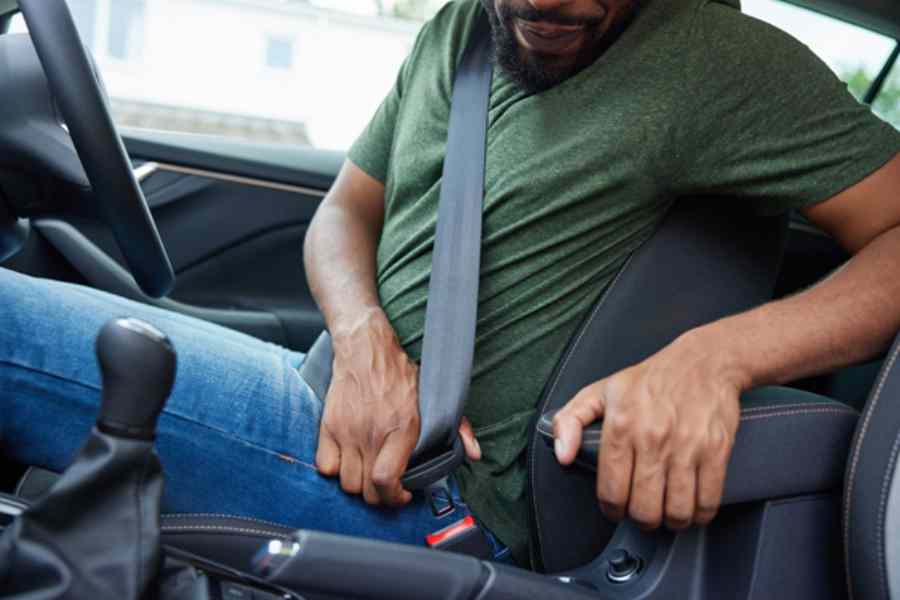Recent changes in seat belt warning regulations aim to significantly impact Texas drivers by improving vehicle safety standards. The new rules mandate audible alerts for all passengers, including those in the back seat, to decrease the number of injuries and fatalities on the road. This effort by the National Highway Traffic Safety Administration (NHTSA) underscores the ongoing commitment to enhancing road safety and passenger protection across the state.
Statistics highlight that wearing seat belts noticeably reduces the risk of death in car crashes, with reductions of around 45% for passengers in standard vehicles and up to 60% for pickup trucks. Texas, a state with vast highways and heavy traffic, sees frequent road accidents, further emphasizing the importance of complying with these regulations. Those involved in car accidents may find themselves in need of legal assistance, emphasizing the necessity of understanding these new requirements.
The introduction of these seatbelt reminders not only seeks to remind passengers of safety but also comes with financial incentives to adhere to the rules. In Texas, failing to comply with seat belt laws can lead to fines ranging from $25 to $250, reinforcing the importance of these measures. These penalties serve as an additional prompt for residents to ensure they buckle up every time they enter a vehicle, promoting a safer driving environment for everyone.
Regulatory Overview of Seat Belt Warning System
The United States has developed various measures to enhance road safety, focusing on seat belt warning systems. With evolving technology, legislation has adapted to include stricter rules and improved warning mechanisms aimed at protecting passengers.
History of Seat Belt Warning Legislation
Seat belt warning systems first emerged in the 1970s, driven by legislation aimed at reducing fatalities. The National Highway Traffic Safety Administration (NHTSA) played a crucial role in these developments. Initially, the focus was on the driver’s seat, with alarms and visual cues introduced to alert non-compliance. Over the years, additional regulations required more sophisticated systems, such as persistent alarms that activated when passengers remained unbuckled.
With time, manufacturers integrated sensor-based technologies to detect and warn about unbuckled occupants in various seating positions. These regulatory changes improved compliance rates across different states, contributing significantly to reduced injury rates in accidents.
Recent Amendments and Their Objectives
Recent years have seen amendments that target not just drivers but also rear passengers. The NHTSA has updated regulations to include warning systems for all seats. For instance, the new final rule introduces alerts designed to remind passengers in rear seats to use seat belts.
The goal of these amendments is to mitigate injuries by ensuring that all occupants are constantly reminded to secure their seat belts. The updated rules are estimated to save approximately 50 lives annually by enforcing consistent seat belt usage across all seating positions. These measures emphasize comprehensive passenger safety, reflecting a shift toward more inclusive safety protocols in vehicles.
Implications for Texas Drivers
The introduction of updated seat belt warning regulations significantly influences various aspects of driving in Texas. It affects safety features for passengers, alters driver behavior and responsibilities, and outlines consequences for failing to comply. Understanding these changes can help drivers better handle their responsibilities and the potential penalties they face.
Enhancing Safety Features for Vehicle Occupants
The updated regulations emphasize improved safety for all passengers, including those in the front seats and those in passenger cars. Modern vehicles are equipped with advanced systems to remind occupants to use seat belts, enhancing protection measures. These reminders often include visual and auditory alerts, designed to catch the attention of occupants who may otherwise forget to secure their belts.
Specific to passenger cars, these safety features play a crucial role in reducing injuries in collisions. When seat belts are used consistently, the likelihood of severe injuries decreases notably. Ensuring compliance with these regulations can result in safer travel experiences for all vehicle occupants, reflecting the importance of the newly emphasized safety measures.
Impact on Driver Behavior and Responsibilities
Drivers in Texas now face increased accountability for ensuring all passengers, especially those in the front seats, are properly secured with seat belts before starting their journey. This responsibility extends to monitoring seat belt use throughout the trip. Failure to do so could lead to potential fines and influence insurance rates.
By adhering to these regulations, drivers serve a critical role in promoting a culture of safety. They are expected to be vigilant and proactive in reminding passengers about seat belt use. This awareness directly impacts driver behavior, encouraging a more diligent approach to safety, which contributes to overall reductions in accidents and injuries on the road.
Consequences of Non-Compliance
Failure to comply with seat belt regulations can result in significant consequences for Texas drivers. Traffic tickets are a common penalty, affecting not only the driver but also each unbelted passenger. This can result in substantial financial implications due to fines and legal fees, placing additional stress on the affected individuals.
Beyond financial repercussions, non-compliance could lead to increased insurance premiums or even legal challenges in the event of an accident. Drivers must prioritize seat belt use to avoid these negative outcomes. Effective implementation of seat belt regulations is essential for minimizing risks associated with non-compliance and ensuring the safety of all vehicle occupants.


